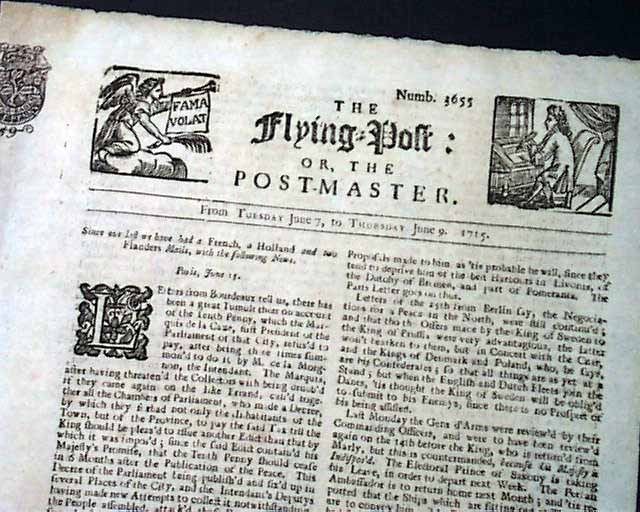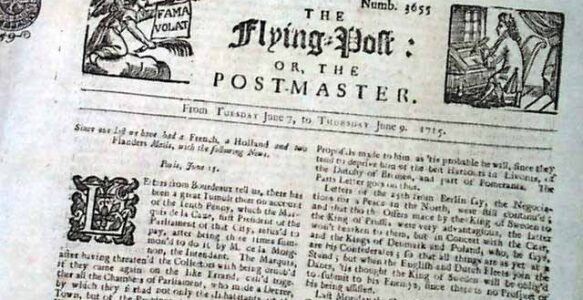As we approach our April Stated Meeting I was searching for a Friday the 13th themed article to make light of the date (of course Lou lucked out with two Friday the 13th meetings last year!) but was less than entertained with what I could find. However, I did stumble across an interesting read about a Masonic conspiracy from 1723 that I wanted to touch on briefly in this month’s newsletter. To be fair, there are a few articles written about this topic that go into better detail, but I’m limited by time and space.
In London there was an article posted in a local paper, The Flying Post, which was claimed to be the first published Masonic catechism and is referred to as “A Mason’s Examination” by R.F. Gould in his book History of Freemasonry. This specific article was printed in the April 11-13, 1723 edition (the paper was only printed a few times a week instead of daily, hence the span in dates) and prompted a response from the community. A second and similar article appeared shortly after this in The Post Boy December 26-28, 1723 edition and was referred to as a “sham exposure” of Masonic ritual.
Why a “sham exposure” you ask? The article itself contains forty-two questions and answers that seem to expose Masonic ritual to the point where a non-Freemason could potentially pass themselves off as a Freemason by knowing specific answers to questions meant to identify Freemasons. What is particularly interesting is to look at these questions, as a Freemason, and evaluate their authenticity, which S. Brent Morris does in his writing The Post Boy Sham Exposure of 1723.
When looking at all forty-two questions and answers, Morris points out that most of the answers given are correct answers supported by other literature available at that time or referencing that time. However, there are five answers that are completely wrong, and some Freemasons may call them critical failures because they are wrong answers to some of the most important questions we use to identify ourselves. One such question/answer refers to a password we use which if given incorrectly would be painfully obvious to us that the speaker was not a Freemason.
Big deal, so what, who cares… we see tons of stuff plastered all over the internet that supposedly reveals the Secrets of Freemasonry. Morris notes in his article that to a non-Freemason the questions/answers are overall a very positive view of Freemasonry and would certainly have left the reader of the time with a good feeling about something they do not understand. He further makes the claim the article was potentially “a disinformation campaign by freemasons designed to misdirect the general public from their workings of the period” and to cast doubt on the previous article in The Flying Post.
Interestingly enough, there exists only a few copies, and potentially just one copy of this article from The Post Boy (insert witty reference to a conspiracy of Freemasons collecting and destroying that one specific edition of a newspaper) left today. The moral of the story here, brethren, is not to believe everything you read, and more importantly, let non-Freemasons know that they can’t believe everything they read about us or our ritual either.

